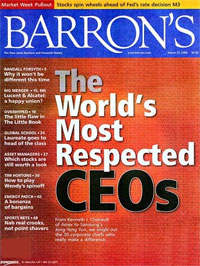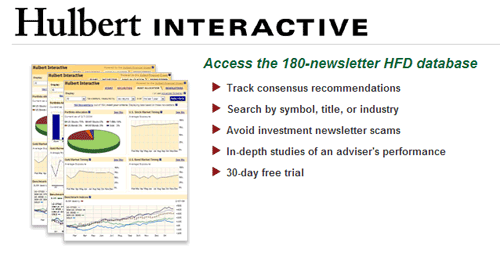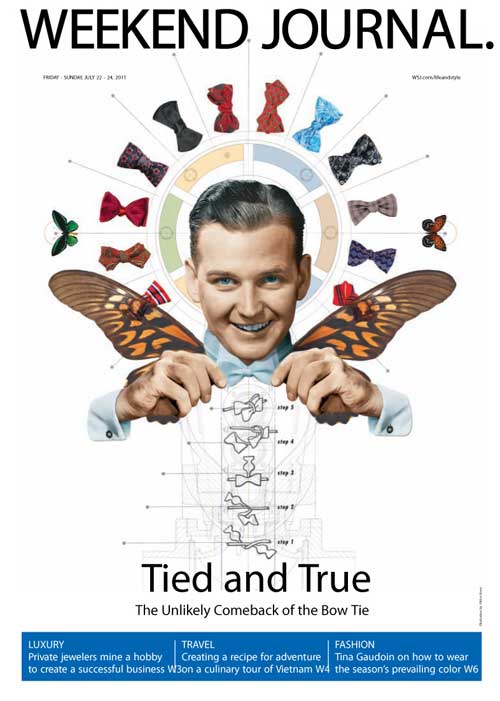 You may already have heard about Barron’s Magazine if you’re into business and finance. The reason why the magazine has an attached fame to its name is because Dow Jones owns it just like the Wall Street Journal. This weekly publication was first published back in 1921, it adopted Clarence W. Barron’s name to it since he was the author of the magazine as well as the president of Dow Jones – he is considered to be one of the founding fathers of the 20th century’s financial journalism. In case you’re not a subscriber yet then this review may be able to help you in making that financially important decision in your life. As a subscriber of Barron’s Magazine I assure you I know that this tiny bit of information (if I may say so) can be a really big help in making important decisions. Keep reading if you want to know more.
You may already have heard about Barron’s Magazine if you’re into business and finance. The reason why the magazine has an attached fame to its name is because Dow Jones owns it just like the Wall Street Journal. This weekly publication was first published back in 1921, it adopted Clarence W. Barron’s name to it since he was the author of the magazine as well as the president of Dow Jones – he is considered to be one of the founding fathers of the 20th century’s financial journalism. In case you’re not a subscriber yet then this review may be able to help you in making that financially important decision in your life. As a subscriber of Barron’s Magazine I assure you I know that this tiny bit of information (if I may say so) can be a really big help in making important decisions. Keep reading if you want to know more.
Barron’s Magazine Summary
Once you start subscribing, Barron’s Magazine will be delivered at your preferred address (i.e. home, office, alternate address etc.) and I particularly like the 4 main sections of it. The authors, columnists, writers and editors employed by Barron’s Magazine are among the most seasoned professionals on Wall Street and the whole content of the magazine is designed to keep the readers informed about capital markets performances, political and current events that could potentially affect it also. I’m a capitalist on the stock market for almost 20 years now and I must say that my success rate has relatively increased since I became a subscriber of Barron’s Magazine.
Barron’s Magazine is Good for What Kind of People?
Here is a list of people that’s best suited to read Barron’s Magazine:
- Stock Market Investors
- CEOs and Business Managers
- Finance Professionals and Bankers
- Professional Traders
The 4 Most Important Sections of Barron’s Magazine
The big help that I get from Barron’s Magazine is its 4 main sections, which are Market Week, Technology Week, Mutual Funds, and The Wrap – below you will find a brief for each topic:
Market Week – Covers all of the news from the financial sector and the stock market from the week before and it also includes opinions and expert commentary from seasoned journalists of Barron’s Magazine. An un-biased coverage is what you can expect to read and it’s filled with information that can help you in your work.
Technology Week – Everything that’s going on in the technology niche that’s slated for public release and will potentially affect the financial market is dicussed in this section. You can expec to read about various technology companies’ R&D and their eventuality into the stock market flotation just like what happened to Facebook recently.
Mutual Funds – Choosing an investment portfolio can be a very tricky thing to do, but Barron’s Magazine Mutual Funds section can give you directions on how to find your place in the messy world of shares and commodities. And who would know best than the top traders in the stock market who also heppens to write the columns on this section?!
The Wrap – This section in Barron’s Magazine is very much like the editorial page of a news magazine and recently famous entrepreneurs like Bill Gates as well as the management team of Apple have given their own commentaries in it. You’ll be reading a lot of opinions from the people who walk the walk in this section and is less formal and less objective driven unlike the other sections in Barron’s Magazine.
But if you ask me I think that the Market Week is the best section in Barron’s Magazine. All the information you need to know about the latest stock market tables, statistical analysis and investment prices on current trends in the market.
What Does it Mean for Me as a Subscriber of Barron’s Magazine?
Signing up for a subscription on Barron’s Magazine was like making a good investment on a huge ROI (return-on-investment) portfolio. Most people may argue about the fact that the same or similar information on stock market statistics can just be pulled off of the internet for free (which is true); however, only Barron’s Magazine can give you rare and genuine information and others are just cannon fodder.
Me being a long time stock trader I only take advises from the best and only real Wall Street leaders can give such great stock market advises – Barron’s Magazine wide-reaching influence enables them to interview even the traditionally secretive traders. Buying a weekly subscription from Barron’s Magazine is almost like buying leads, you always get the upper hand in stock market information.



